I tilted my head up, and stared at the majestic red canyons.
All 150m of it.
Like a 7-year old in a candy store, I was in absolute awe. The canyons surrounded me on both sides, like all sorts of colourful candies surrounding the little boy, and I gasped in all its glory.
Millions of years of wind, rain and erosion form a dramatic landscape of red hills and bizarre rock formations. Layers of different shades of red painted the walls of the canyons, almost in a parallel fashion. How do they look so smooth, like a natural art masterpiece, is a mystery to me.
Now I understood why this place – the 215,000 hectares (a half-million acres) Talampaya National Park – is declared a UNESCO World Heritage Site in 2000.
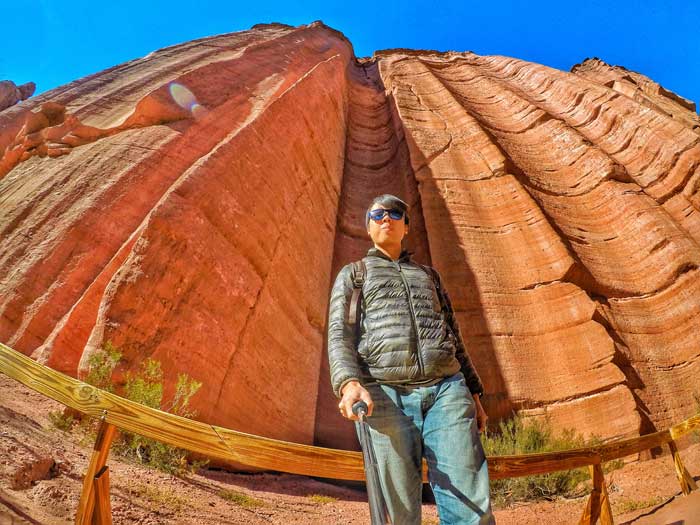
I didn’t want to go initially, as I thought it is “just a canyon”. Furthermore, the exorbitant price is a huge turn-off: ARS $450 for the ‘excursion’, ARS $250 for the entrance fee and ARS $600 for the compulsory guided tour. That turned out to be around USD $85 (June 2017).
Blasphemy.
So why did I go?
Located at La Rioja province in north Argentina, the closest town to stay for a night is actually Valle Fertil, in the San Juan Province.
The reason I went there in the first place is to visit its sister park, Ischigualasto Provincial Park – more commonly known as the Valley of The Moon.
Moonwalking? Of course I’d go.
I left my hostel at Mendoza in the morning, got the bus tickets to San Juan 15 min before it leaves, and took the 2pm bus to Valle Fertil.
Buses leave 3 times a day to Valle Fertil and are operated by the company Vallecito. The journey is about 4 hours.
From Terminal de Omnibus Ciudad de San Juan: 7:15 hrs (except Sundays) – 14 hrs – 19.15 hrs
From Terminal de Omnibus Villa San Agustin (Valle Fertil): 3:30 hrs (except Sundays) – 14 hrs – 17 hrs
I’ve read that upon arriving, you’d be swamped with agencies shoving the National Park tours in your face. The funny thing is, only one person called out to me as I walked out of the bus terminal.
I rejected him, confident that my hostel offers tours.
Hostel Valle Fertil isn’t what I thought it’d be. The staff doesn’t speak English, there is no hot water and no electricity in my room, and I was the only person in my hostel! And no, the hostel doesn’t provide tours.
Damn it, I should’ve gotten the tour just now. Who’d have known?
When I returned to the bus terminal, the guy left. I walked to the tourist centre (with nobody speaking English) and found out who offered tours to the National Parks: Paula Tour and Hostel Ischigualasto.
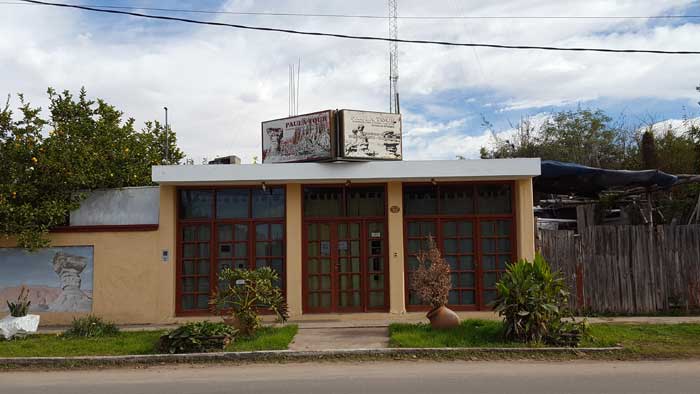
Paula Tours - door closed
Throughout my three days there, I have never seen Paula Tour opened its doors. Perhaps there’s another entrance, I don’t know. I walked to Hostel Ischigualasto, and lo and behold, it was the same guy at the bus terminal providing tours. He must’ve been laughing his ass off seeing me crawling back to his headquarters, begging for a tour.
There is no public transport to the parks and I only wanted to go to Ischigualasto, but all tours require a group. As a solo traveller travelling in off-season, this is a recurring problem.
- YOU MIGHT ALSO LIKE: The Marble Caves of Puerto Rio Tranquilo in Off-Season
The tour to Ischigualasto only leaves in two days. The only tour they provide for the next day is to Talampaya. I could say no, stay in this small town with nothing to do and waste a day, or go see what makes the canyons a UNESCO site.
I decided I’d go, and check off another on my UNESCO list.
Talampaya National Park
The Argentinean National Park Service employs a dual pricing system, which means that foreigners must pay a higher entrance fee than locals. As a privately-owned park, the Talampaya forces all visitors to go on a compulsory guided tour with the park’s official vehicles with official guides.
Basically, our tour guide from town was only for transportation purposes.
The worst part? The guided tours are only in Spanish. So, this is me paying a hell lot for something I don’t even understand!
I’m sure the park knows how expensive a visit is; they even have a “Where did your money go?” poster at the park entrance.
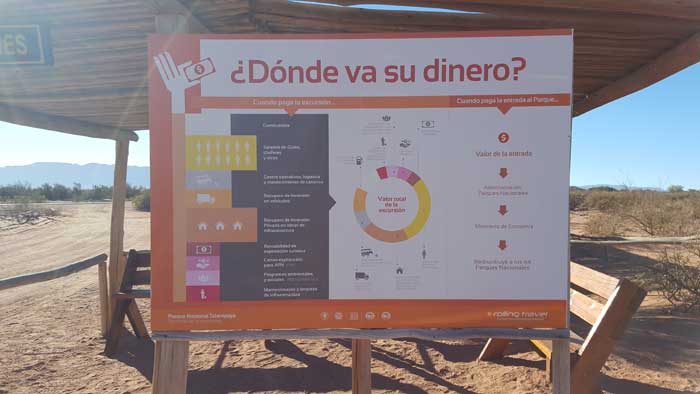
"Donde va su dinero?" - "Where goes your money?"
The 1.5 hours’ drive from Valle Fertil - along a desert-like landscape - was uneventful, although there were guanacos, donkeys and even a fox dragging a carcass across the road.
The typical excursion is an open-top, double-decker bus where you enjoy views from the top and go for short walks to explore the landscape on foot. A Spanish-speaking guide accompanies you and shares about the rock formations and history of the area spanning over 250 million years.
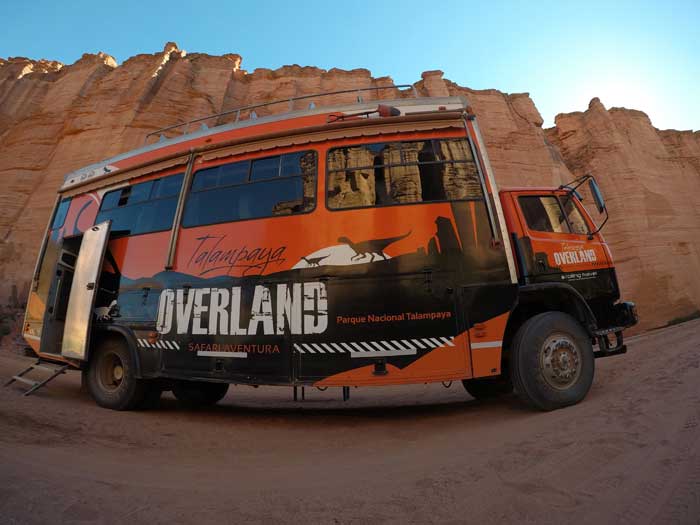
The other options are combi, minibus and a 4x4 safari-style, although these weren’t available when I was there (probably an off-season thing).
With 20 min before the bus leaves, we explored the Dinosaur Trail at the park entrance. It is basically an outdoor museum about the first dinosaurs that roamed the Earth.
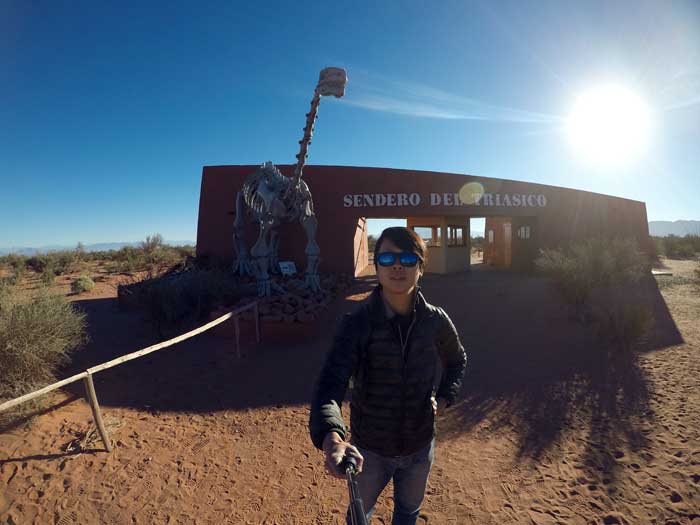
You’ve heard of the Jurassic era?
These are dinosaur replicas from the Triassic era, known as the age of dinosaurs, forefathers of the Jurassic dinosaurs. Now take that! Sadly, the information is in Spanish.
Fun fact: The remains of Lagosuchus Talampayensis, one of the oldest dinosaurs that roamed the planet, were discovered in the park.
The tour starts with the park bus going through a 15km long gorge that is in fact, a dry riverbed. Talampaya means ‘Tala’s dry river’ in the Quechua language, a name the natives aptly gave. This area is one of the driest on Earth, where summer temperature goes up to 40°C. Rain is uncommon, so the gorge hardly becomes a river.
“The right side has a better view.” Our driver told us before dropping us.
After a very bumpy - but scenic - bus ride, we arrived at the first stop: a 25min trail along wooden platforms named the Petroglifos. Like the name suggests, this area is a series of petroglyphs ranging from 600-1800 years old. The Diaguita and Ciénaga cultures left these rock paintings of birdlife, guanacos, other animals and poorly understood geometric and anthropomorphic shapes.
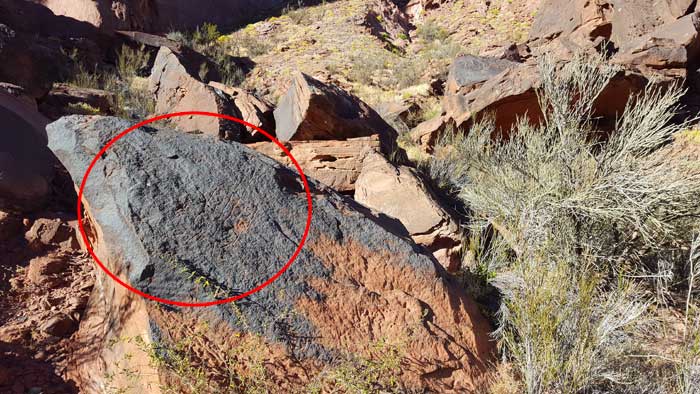
petroglyphs
I am always enthralled with tribal paintings, petroglyphs and the like. So much so that I went out of the way to the Cuevas de Las Manos in Northern Patagonia. And Easter Island. Who can forget Easter Island?
The second stop in the middle of the gorge is a leafy place called El Jardin Botanico (The Botanical Garden). Yes, these curvy trees grow in the middle of the desert-like canyons, adding a touch of green to the 50 shades of red.
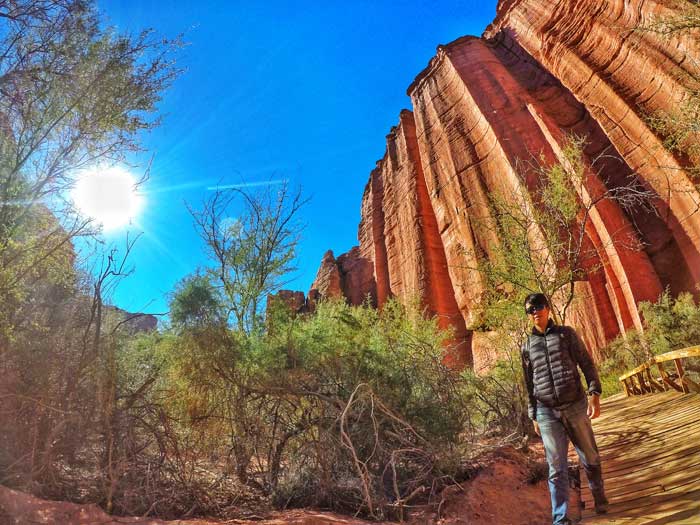
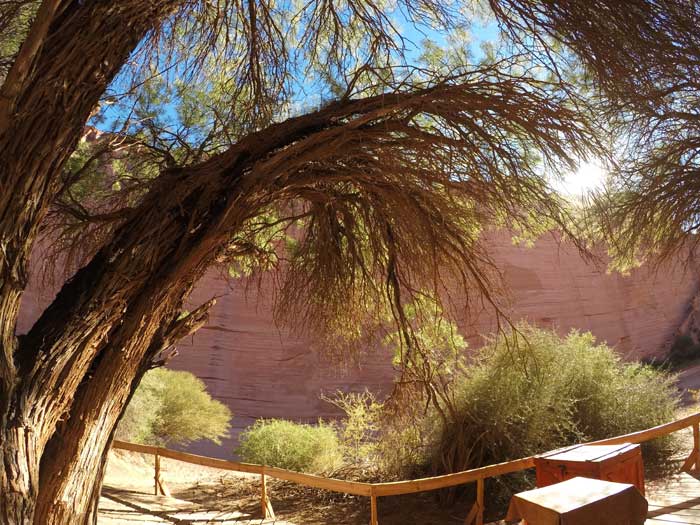
It is also here where I truly realized the sheer size of the canyons. One mile long and 150m tall, these red sandstone walls are as sharp as diamond-cut marbles. Looking up at the natural megastructures, I feel so… tiny.
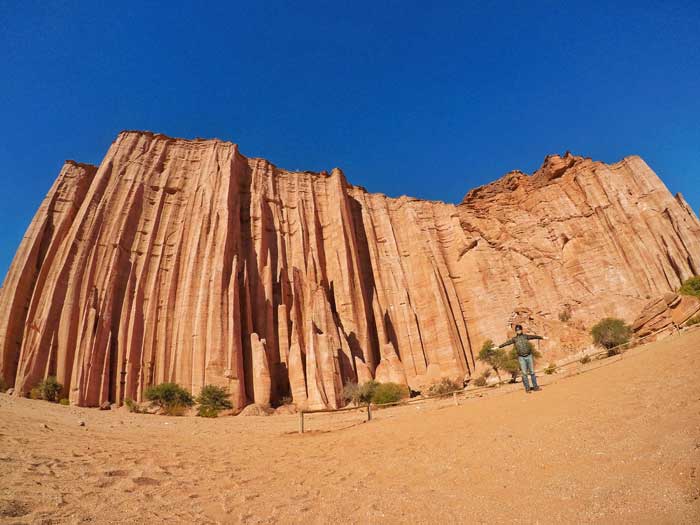
Walking along the platform, we came to the Echo Chimney or La Chimenea, a 150m tall tubular sandstone escarpment that, when shouted at, returns an echo louder than your call. Our guide made us shout together, and the numerous fading echo triggered laughter from the group.
When we returned to the bus, our guides surprised us by having prepared a table of Argentinean white wine, orange juice and snacks. We cheers-ed, had a quick bite and took photos of our wine glass with the red canyons in the background. It was perfect timing as I was starving by this time. The snacks filled me up before we continued our tour.

The final two stops – the Gothic Cathedral and the Monk – are impressive spires and hard capstones sitting atop soft pedestals, formations sculpted by wind, water and time. Lots of time. They are so-called as they take the shape of their namesakes.
While everyone else is busy taking photos, I took time to appreciate these natural masterpieces. I noticed the obvious striation in the layers of the rocks, forming different shades of red, and this is evidence to the differences in minerals.
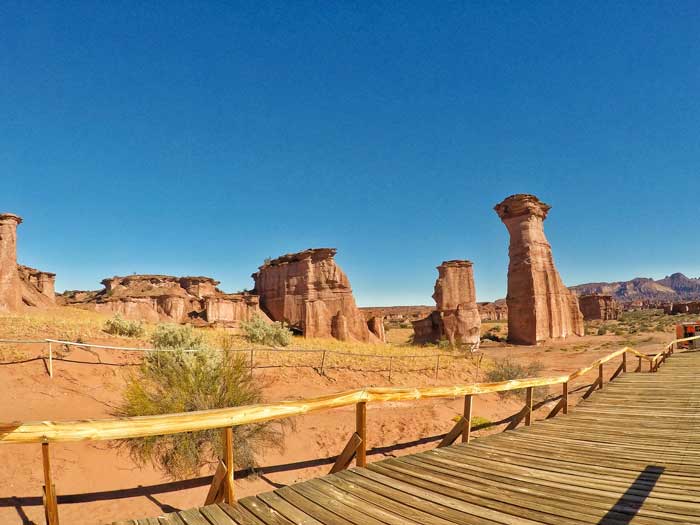
And while the canyon is all shades of red, green bushes grew in abundance just beyond the park. On the final platform, you can even see the Andes mountains in the distance! I crossed the Andes range a few days ago and went from white snow-filled mountains to red, hot desert canyons. What a diverse landscape in a matter of days!
As I sat in the bus back to the park entrance, I felt… satisfied. It wasn’t the easiest place to visit and it sure isn’t cheap, but I’m glad I came to this park. It went from ‘just a canyon’ to ‘majestic, awe-inspiring, and definitely UNESCO-worthy’.
Plus, I’ve never seen so much red in my life!
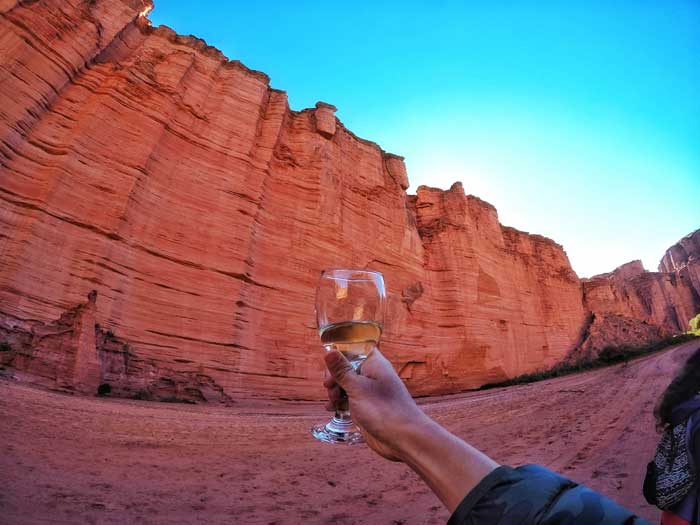
And now, it's your turn.
